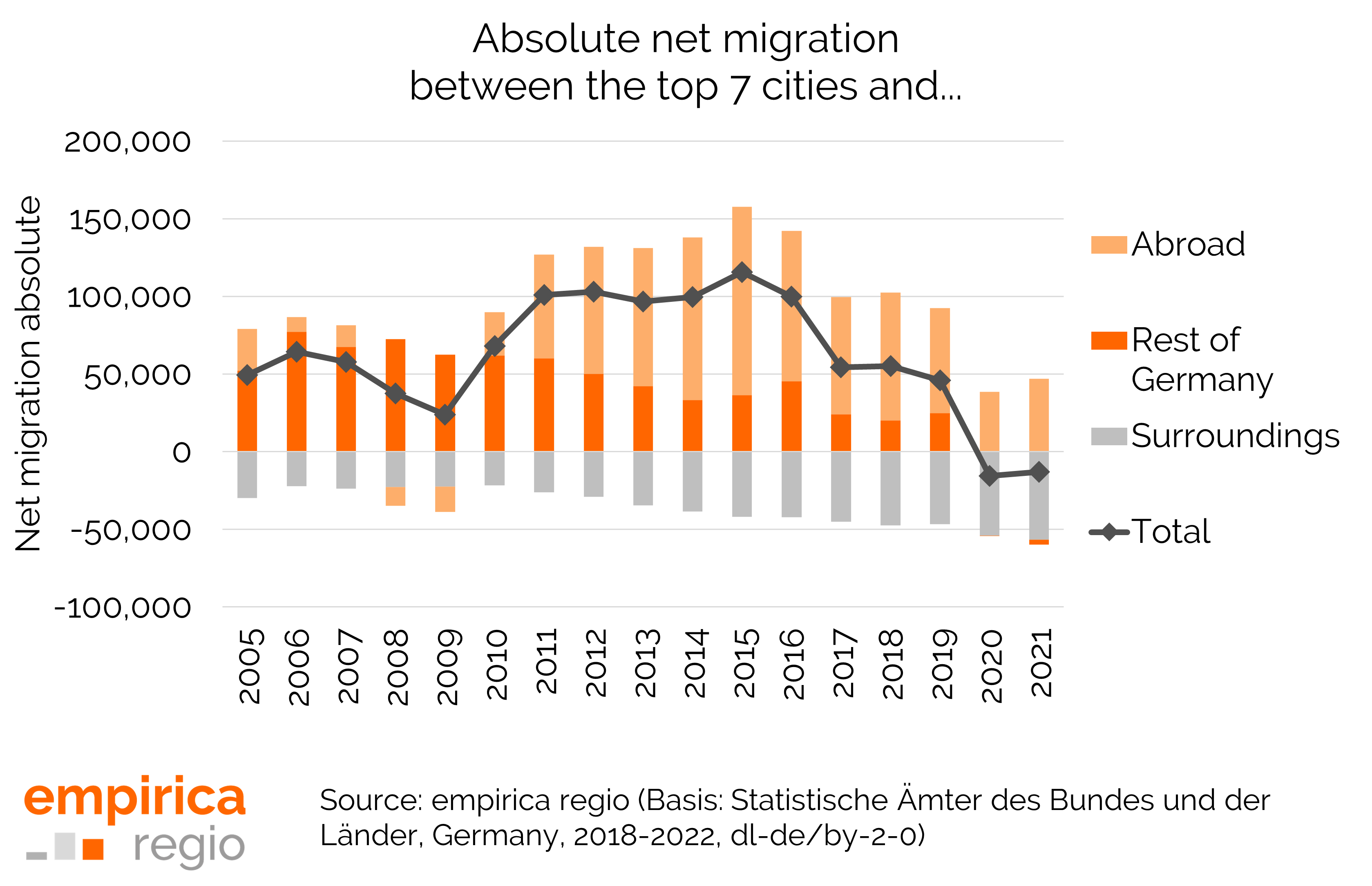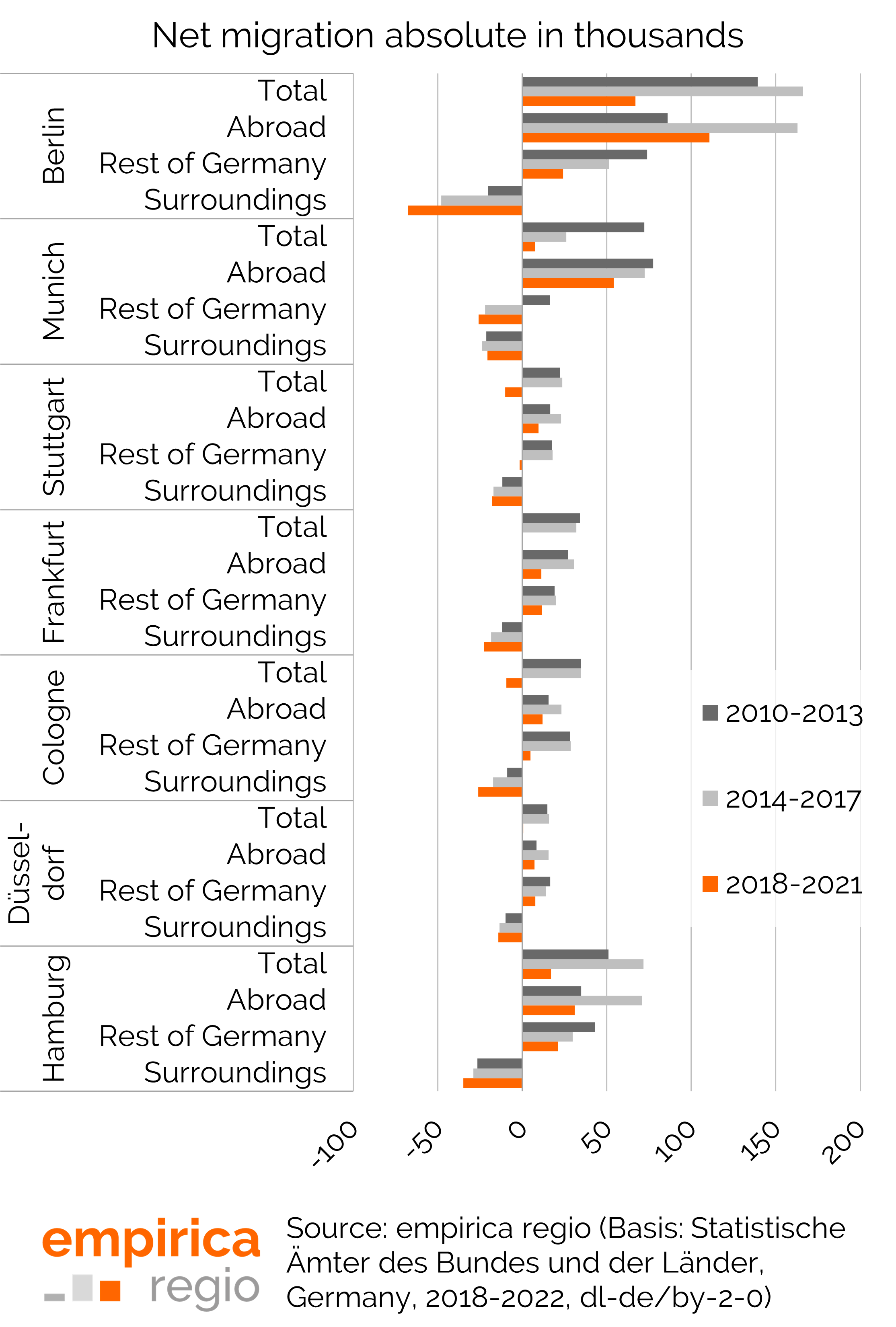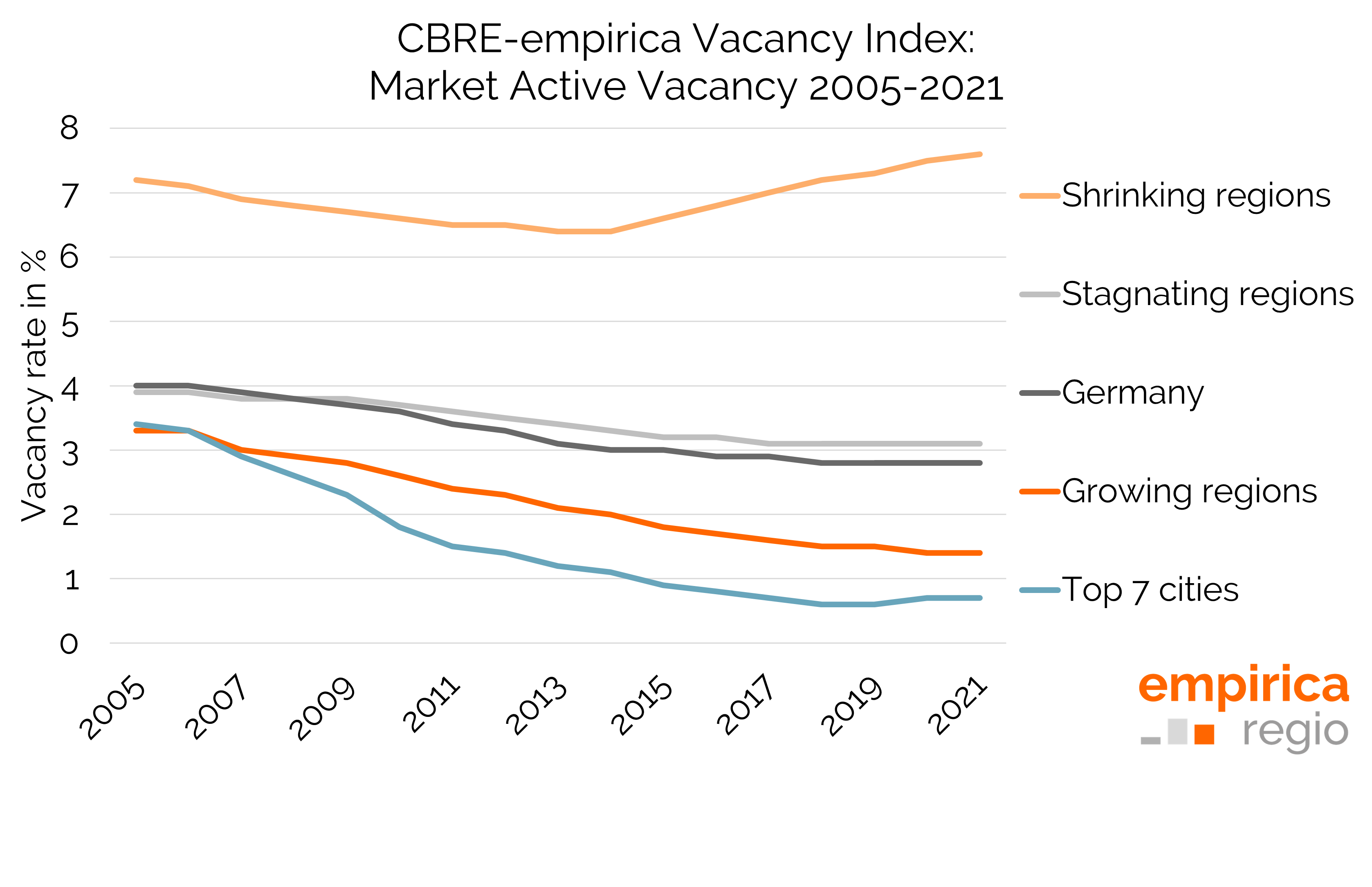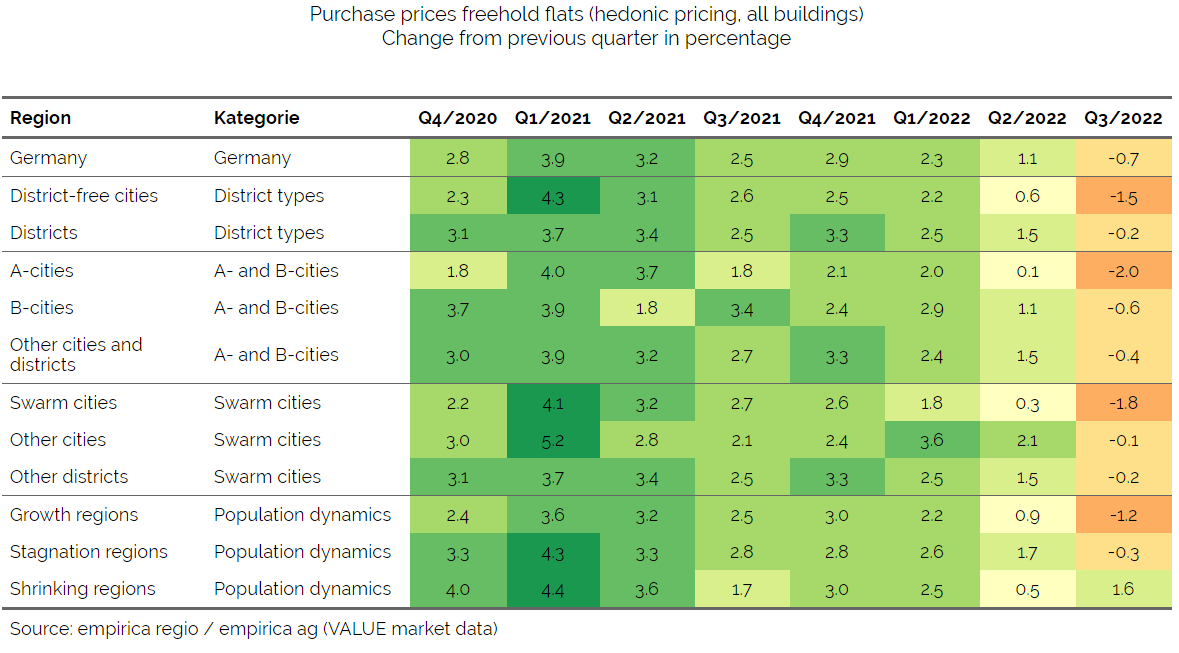Top 7 cities are shrinking
The top 7 cities in Germany show shrinking tendencies. In 2021, most metropolises again recorded negative net migration. This continues the shrinking trend of the past years. This is shown by figures from the economic and real estate data provider empirica regio.
A large part of the migration took place to the immediate surrounding area. Cologne recorded the strongest decline in population. On balance, the city lost almost 10,000 people. In addition, foreign immigration continues to weaken.
“The new figures for 2021 confirm the trend reversal that has been emerging for some time,” says Jan Grade, Managing Director of empirica regio. “While rural regions in particular are recording higher migration gains, the decline in immigration to the core cities is intensifying,” Grade adds. Already in 2020, Hamburg was the only city from the group of the top 7 to show positive net migration. “More and more people are willing to take on longer travel times to the cities - even districts at a distance of one hour and more benefit from migration,” says Grade.
The shrinking trend in Germany’s core cities has been evident since 2018 - more and more people are moving to the surrounding areas. The trend towards urbanisation in the surrounding areas has been completely reversed for a number of years - for a long time now, the communities surrounding the metropolises have been recording positive net migration. The main reason for this is the persistently high price level for housing in the top 7. This is particularly evident in Berlin and Hamburg: in 2021, significantly more than 10,000 people left the city states for the surrounding areas on balance. It is particularly noteworthy that the long-term trend of declining foreign immigration is also continuing - despite overcoming the corona-induced slump. Until now, immigration from abroad has been a mainstay of urban growth. Since the peak in 2015 and 2016, foreign immigration has shown strongly declining trends.
“The thesis that the Corona pandemic is the only cause of urban migration cannot be upheld,” says Jan Grade. “Corona may have been a trend amplifier, but already in the years before the outbreak of the pandemic there were declining migration gains, and now almost two years later the A-cities, with the exception of Berlin, are shrinking. The trend is not limited to the large metropolises - some other cities are also losing population. The migration of families in particular must be a concern for cities, as they are usually in a good financial position and revitalise a city,” adds Grade.
The cumulative migration balances for the years 2018 to 2021 in particular make this clear. While there were high population increases in the top 7 between 2010 and 2013, Frankfurt, Cologne and Stuttgart already recorded negative balances in the period from 2018 to 2021 - the migration balance also shrank sharply in the other metropolises. Despite the opportunities for the surrounding municipalities due to the influx, there are also new challenges. A higher volume of traffic, an increasing demand for building land and growing requirements for local and energy supply must be taken into account more strongly in the future.
Press contact
Jasper Radü
PB3C GmbH
Tel.: +49 40 5409084-21
radue@pb3c.com





